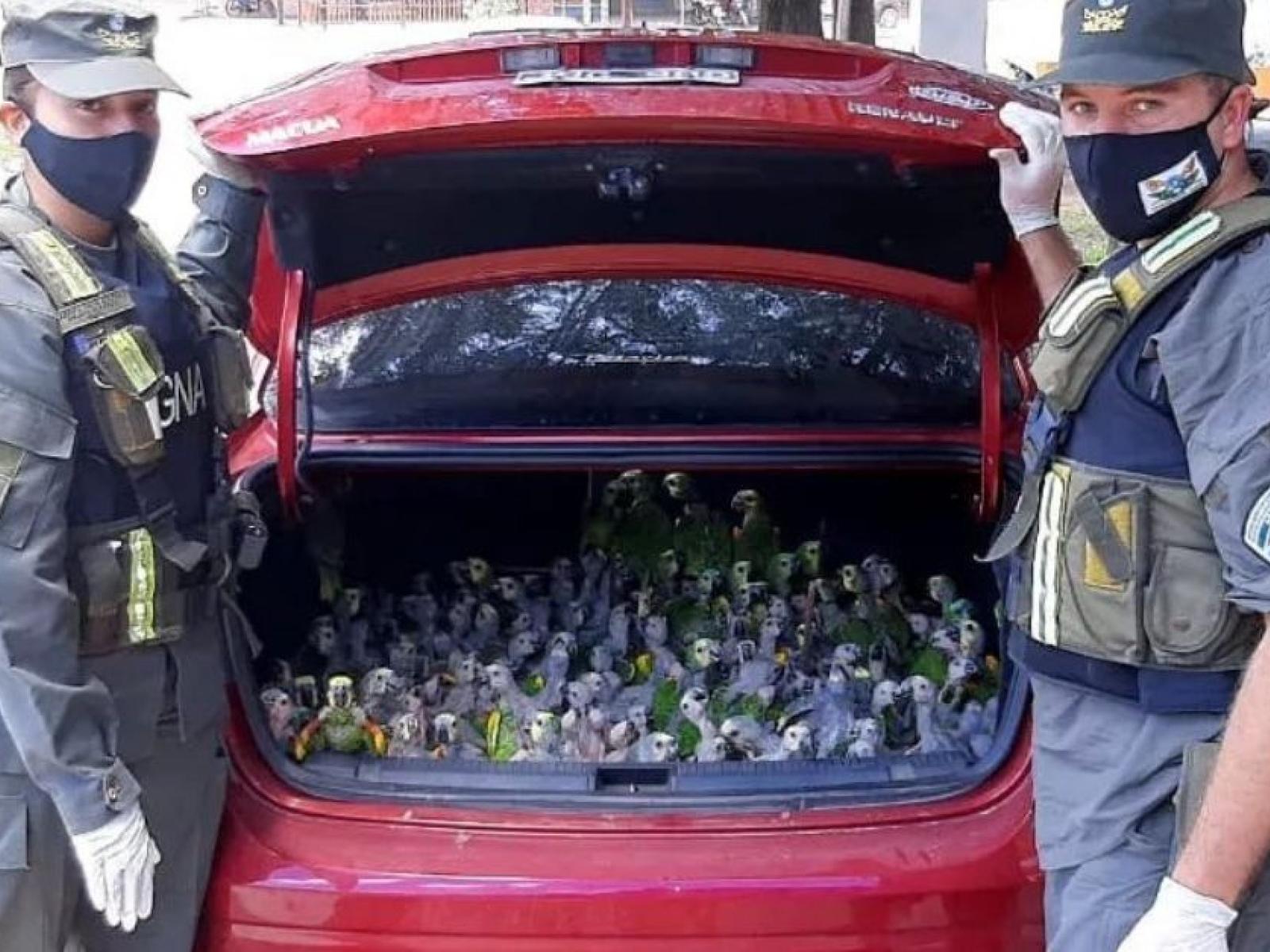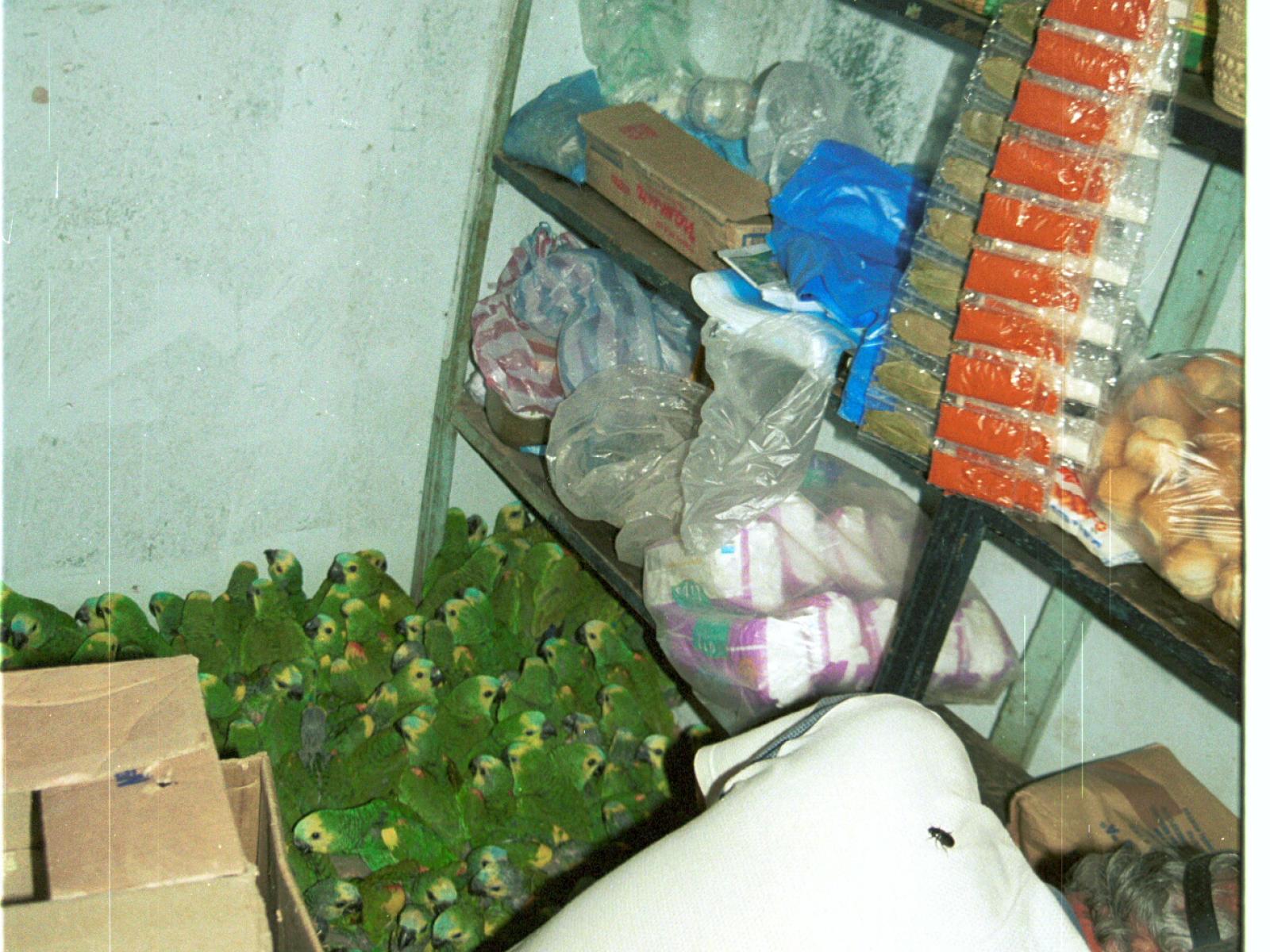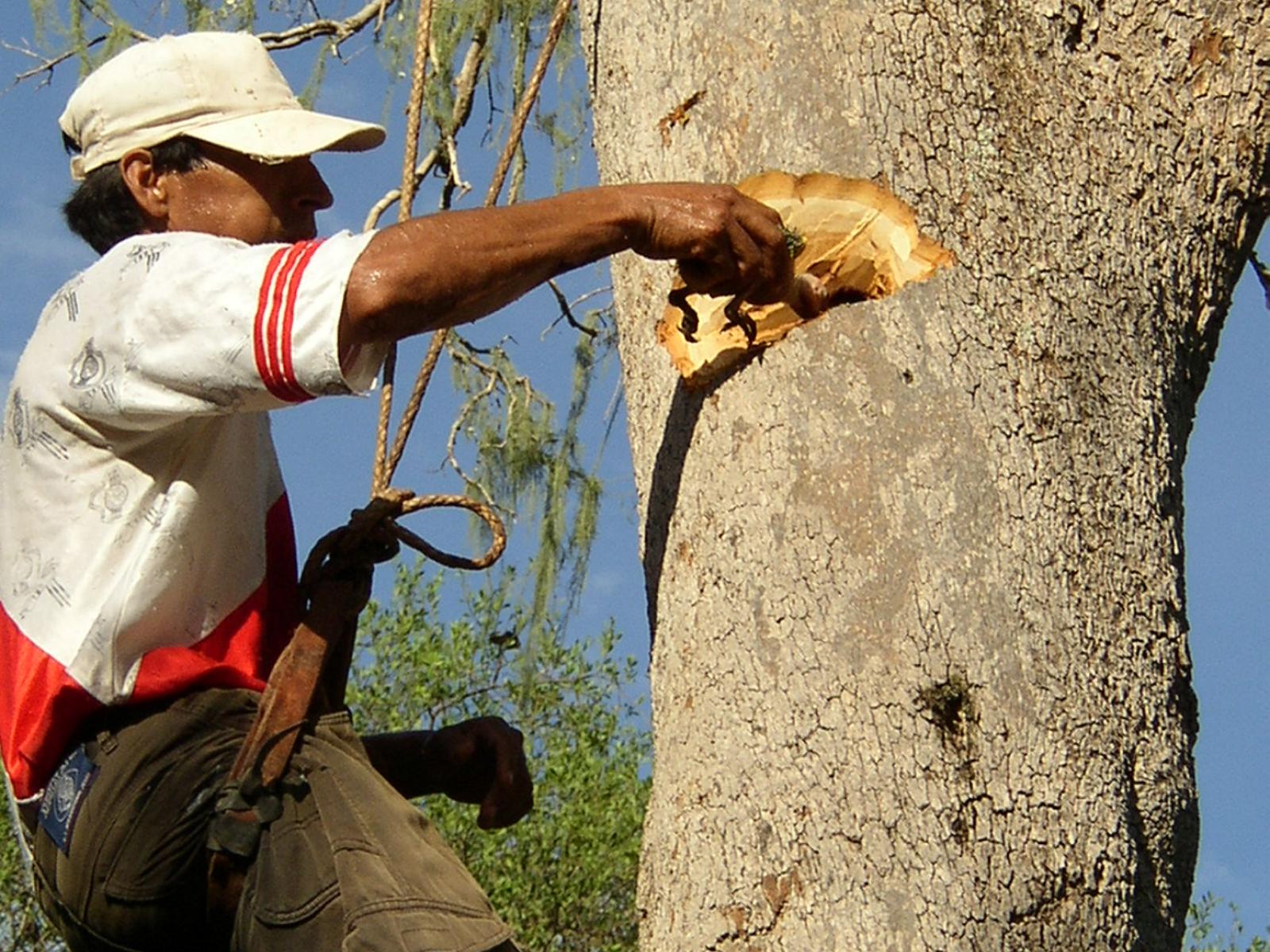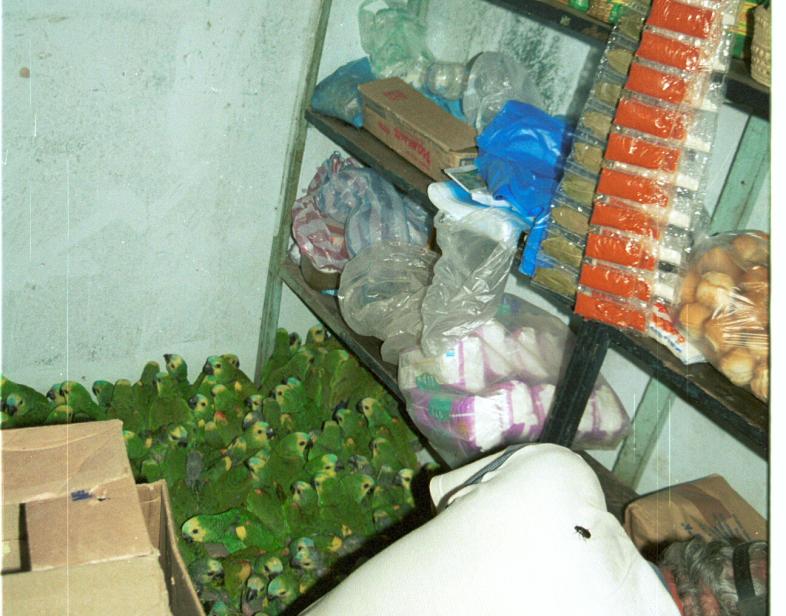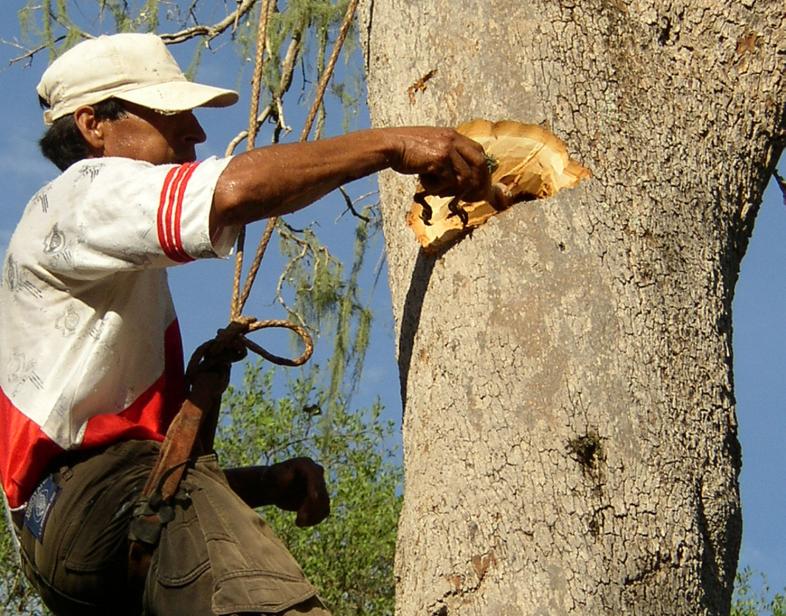An Overview Of Our Solution
The Blue-fronted Amazon parrot is one of the most traded species in the illegal pet trade. Poaching is a major threat to its population. This project aims to reduce nest poaching and the demand for wild parrots through community-based initiatives in the Chaco woodlands of Argentina. The project involves partnering with local communities, providing education and awareness-raising programs, and promoting sustainable livelihoods. The project will reduce nest poaching by 50% and the number of traded parrots by 20%. This solution provides an effective model for reducing the illegal pet trade of parrots and conserving biodiversity in Latin America. The economic sustainability of the solution relies on a mix of funding sources, including grant funding, government subsidies, and private sector funding, contributing to the long-term conservation of this parrot species.
- Population Impacted: 5000
- Continent: South America
Prénom
Nom de famille
Type d'organisation
Courriel
Analyse du contexte
Currently, the most important direct pressure on many bird species comes from their capture for illegal domestic markets. The wildlife authorities, national or provincial, and police forces extend significant efforts and resources towards controlling the local pet trade, primarily in end-market cities. The bulk of this local trade affects common parrots trapped in forests.
The largest population of Blue-fronted Amazons is concentrated in the Chaco woodlands of Argentina, Paraguay, and Bolivia; this population is one of the main sources of wild parrots for the illegal pet trade. The Blue-fronted Amazon is the number one traded species, not only now but also in all the parrot trade history. The poaching of nestlings affects the reproductive output of parrots and reduces the availability of cavities for nesting. Moreover, the Chaco woodland is experiencing a high rate of deforestation; consequently, the Blue-fronted Amazon's breeding habitat has been dramatically reduced during the last decade, and the global population is decreasing.
People inhabiting the Chaco forest remove nestlings for the pet trade. In the past, there were some attempts to legalize and reduce poaching. These efforts were not successful and the program ended in 2011; no legal harvesting of nestlings has occurred since this time. Currently, the illegal pet trade is active in the Argentinean Chaco woodlands as reflected in the confiscated shipments every year.
https://www.argentina.gob.ar/noticias/gendarmes-rescatan-577-loros-que-eran-trasladados-en-un-camion
https://notife.com/768420-santiago-del-estero-decomisan-216-loros-habladores-hacinados-en-un-baul/
Décrivez la solution technique que vous voudriez voir le public cible adopter.
The technical solution we want the target audience to adopt is part of a larger project which includes three goals:
Goal 1: Describe the current status of nest poaching activities and the population size of Blue-fronted Amazons
Goal 2 (this proposal): Reduce nest poaching and demand for wild parrots by promoting behavioural changes among local inhabitants.
Goal 3: Develop an action plan to control illegal trade activities.
The goal of this proposal (Goal 2 above) includes two specific objectives:
1. Use behavioral levers to decrease the need for local inhabitants to sell parrots while increasing their interest in protecting parrots. This will lead to a reduction of 50% in the number of poached nests in the Impenetrable region of Chaco woodland of Argentina.
2. Use behavioral levers to reduce the demand for parrots as pets, leading to a reduction of 20% in the number of traded parrots from the Impenetrable region of Chaco woodland of Argentina.
Décrivez votre intervention comportementale.
1. We will conduct a Conservation Awareness Pride Program to work with the local forest community of the Impenetrable region. The program will be focused primarily on children and rural schools. We will provide information about the parrot´s role in the forest and why they should be conserved. The program will build a strong pride in the local people by promoting several actions such as nest cavity repair and nest monitoring with surveillance cameras. We hope this action will reduce the number of poached nests in the region by 50% during the first two years of the project and also increase the number of available cavities for the Blue-fronted Amazon.
2. We will conduct a nationwide awareness campaign within Argentina, aiming at ending the trade of wild birds, with a focus on decreasing the popularity of parrots as pets. We will encourage people to change their pet-buying behavior, promoting the benefits of choosing domestic animals rather than parrots through a social marketing campaign to help the recovery of the Blue-fronted Amazon wild populations. With this campaign, we hope to reduce the number of illegally traded parrots from the Impenetrable region of Chaco woodland of Argentina by 20% during the first two years of the project
Leviers comportementaux utilisés
Au besoin, veuillez expliquer comment vous avez utilisé le ou les leviers avec plus de détails.
Our behavior change framework comprises all six behavioral levers to appeal to people’s full range of behavioral motivations and barriers. Engaging all levers simultaneously is more likely to lead to action, and we consider material incentives important to include at this stage. We will:
- use emotional appeals to drive pride and avoid the prospect of shame.
- social influence and choice architecture levers will aim to discourage people from keeping birds (especially parrots) as pets.
- provide information to school children and families about the impact of nest poaching and illegal trade
- The material incentives lever will ensure that poor families are not constrained in their ability to make behavioral change due to their need for basic necessities.
- The rules and regulations lever will be enacted through our remote surveillance of nests, to measure the reduction in poaching and hold people accountable to their pledges when material incentives are given.
Décrivez votre mise en œuvre.
Activity 1.1 Design and production of materials for talks and handouts in rural schools and among families in the Chaco woodlands.
• Provide written materials that explain how to protect parrots and their nests.
• Communicate in a clear, concrete, and unambiguous way
Activity 1.2 Surveys and visits to schools and families in the Chaco woodlands
• Pride: Motivate people living in the Chaco woodland to show others what they have done regarding parrot conservation.
• Prospect of shame: Motivate people living in the Chaco woodland to avoid nest poaching and parrot trade. We will personalize the message by including human faces in the campaign and focus on a few stories.
•Provide money to families, at a value similar to what they would receive from selling parrots, in exchange for their pledge to protect parrots on their property.
Activity 1.3 Nest cavity repair & nest surveillance
• Teach local inhabitants how to quickly and easily repair nest cavities that were cut open by poachers, allowing parrot nest cavities to be reused.
• Repair at least 50 nest cavities in the properties surrounding the Loro Hablador National Park.
• Place wildlife trail cameras a random selection of nest cavities to assess the reduction in poaching and compliance of families given material incentives.
Activity 2.1 Production of media for social sites
• Publicly broadcast about people who have chosen not to buy wild birds.
• Highlight the possibility of social sanctions for keeping wild birds as pets
• Leverage credible and trusted messengers who are not buying wild birds
To eliminate excuses for not engaging in the “Stop The Trade” campaign, we will
• Encourage public commitments or pledges
• Provide visible indicators that signal support for the campaign (e.g., hats, badgers, etc).
Décrivez le leadership de votre solution. Qui dirige la mise en œuvre?
Sarah Faegre is a wildlife biologist with 14 years of experience focusing on community-based avian conservation. She has worked to implement conservation strategies for endangered species within impoverished communities and is particularly interested in developing sustainable livelihoods for local communities. Her experience working with conservation projects has given her extensive knowledge in population monitoring, habitat restoration, and community engagement. Her ability to work collaboratively and her passion make her an excellent candidate for leading.
Igor Berkunsky is a conservationist with 20 years of experience working in Latin America. He has extensive experience in the research and management of wild parrot populations and has participated in various conservation projects to mitigate the impacts of illegal trade and poaching of endangered parrot species. Igor published scientific articles on parrot ecology, conservation, and management and is recognized as an expert.
Principaux intervenants et partenaires du programme
We will coordinate our activities with several stakeholders, including the environmental Agency of the Chaco province and two NGOs, Aves Argentinas (BirdLife partner) and the World Parrot Trust.
The Environment and Biodiversity Secretary of the Chaco province of Argentina will participate in all stages and activities of this proposal.
Aves Argentinas is the oldest environmental NGO in Argentina, with a strong focus on bird conservation. The organization has carried out numerous campaigns to combat illegal bird trade, such as the "Stop Illegal Bird Trade" campaign, which led to the seizure of more than 16,000 illegally trafficked birds. Aves Argentinas also promotes conservation actions, such as habitat protection and restoration, bird monitoring, and education and awareness programs. The organization has a strong track record of successful partnerships with government agencies, other NGOs, and communities to achieve its conservation goals.
The World Parrot Trust is a non-profit organization dedicated to the conservation of parrots worldwide. They work on a variety of conservation issues related to parrots, including habitat protection, anti-poaching efforts, captive breeding, and public education. They have conducted campaigns to raise awareness about the illegal trade of parrots and have also worked on programs to support sustainable livelihoods for local communities that depend on parrots as a source of income. The organization also conducts research on parrot conservation issues and works with governments and other organizations to advocate for stronger protections for parrots and their habitats.
Qui a adopté le(s) comportement(s) souhaité(s) et dans quelle mesure?
We hope that at least 50% of the people we engage will display some degree of behavioral change. We will measure the change in behavior within the Chaco woodlands through surveys given at the end of each parrot breeding season, assessing the number of parrots sold. We will also do a direct assessment of a random sample of nest cavities through remote surveillance.
We hope that our national campaign will reduce interest in buying parrots as pets within Argentina and the global community. We will evaluate the success of this social media campaign by measuring our progress towards goals for the number of people reached among a variety of social media platforms.
Quel a été votre impact sur la pollution de l'eau?
Our project will have an immediate positive impact on the environment in terms of biodiversity conservation and the health of ecosystems. The Blue-fronted Amazon parrot is an important part of the Chaco woodland ecosystem, and its disappearance would have negative consequences for the overall health and functioning of the ecosystem through loss of seed dispersal and other ecosystem services. By repairing 50 nest cavities and training locals in nest cavity repair, we will immediately decrease one of the limiting factors for the species: nest cavity availability. By promoting behavioral changes among local inhabitants and reducing the illegal pet trade, we can help to preserve the natural habitat of the Blue-fronted Amazon and protect the biodiversity of the region.
Additionally, by implementing alternative livelihoods for local inhabitants, we can promote the conservation of the environment and biodiversity while supporting the local economy.
Quel a été l'impact de votre solution sur les problèmes d'équité?
By working with local communities and involving them in the conservation efforts, our solution can help to promote social equity and ensure that the voices and perspectives of these communities are heard and valued. This can help to address the historical marginalization of these communities and promote more inclusive and equitable conservation practices.
By providing alternative livelihoods for local inhabitants that do not rely on the illegal pet trade, our solution can help to address economic disparities and promote economic opportunities for individuals and communities who may have been excluded or marginalized in the past.
Our solution can help to respect and protect the rights of indigenous communities by promoting their involvement in the conservation efforts and recognizing their knowledge and cultural values related to the Blue-fronted Amazon parrot and the Chaco woodland ecosystem. This can help to promote more respectful and collaborative conservation practices.
Quels étaient les avantages sociaux ou communautaires de votre solution?
Our solution has the potential to improve community social cohesion, increase awareness and education, improve health and well-being (by minimizing contact with wildlife), and protect cultural heritage.
Additionally, families that rely on selling parrot nestlings for their basic necessitates will be given material incentives that allow them to change this behavior in the short term, while we work to establish more sustainable methods of income generation for the long term.
Quels ont été les avantages connexes de votre solution par rapport au développement durable?
The reduction of nest poaching and the illegal pet trade of Blue-fronted Amazon parrots in the Chaco woodland ecosystem can contribute to several sustainable development co-benefits such as biodiversity conservation, climate change mitigation and adaptation, sustainable resource use, decreased chances of zoonotic disease transmission, poverty reduction, and partnership and collaboration.
Durabilité : Décrivez la durabilité économique de votre solution.
The economic sustainability of the solution depends on a mix of funding sources, including grant funding, government subsidies, and private sector funding.
In the initial phase of the project, grant funding will be used to conduct research, establish partnerships, and develop the conservation plan. This funding was critical in providing the initial resources needed to get the project off the ground.
However, to achieve long-term economic sustainability, the solution needs to be supported by a range of funding sources. Government subsidies can be used to support law enforcement efforts and provide incentives for local communities to engage in conservation activities. Private sector funding can be used to support habitat restoration.
Retour sur investissement : Combien a coûté la mise en œuvre de ces activités?
In the case of reducing nest poaching and the illegal pet trade of Blue-fronted Amazon parrots, the ROI can be significant in terms of biodiversity conservation, ecosystem services, and economic benefits. By reducing the number of poached nests and traded parrots, our project will contribute to the conservation of the Blue-fronted Amazon parrot population and the Chaco woodland ecosystem. This will help to maintain ecosystem services such as seed dispersal, water regulation, carbon sequestration, and soil fertility. Moreover, conserving the Chaco woodland ecosystem can support sustainable resource use, such as eco-friendly farming practices or sustainable tourism, which can generate economic benefits for local communities.
Comment pourrions-nous reproduire cette solution ailleurs avec succès?
Replicating this method of reducing nest poaching and the illegal trade of Blue-fronted Amazon parrots in Latin America requires a multi-stakeholder approach that involves local communities, government agencies, NGOs, and other stakeholders. By working together, it is possible to achieve sustainable conservation outcomes and protect this important species for future generations. Other provinces of Argentina and other countries as Bolivia, Paraguay and Brazil could replicate the solution. More broadly, our methods could be applied towards the community-based conservation of other trafficked parrot species in Latin America.
